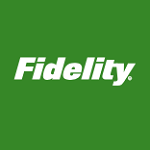Fidelity Customer Reviews
Fidelity Expert Review
John Kimelman, an investment expert with 30 years experience reviews Fidelity.com and explains the platforms pros and cons.
Fidelity Review: Bringing Time-Honored Respectability to Online Investing

Provider: Fidelity
Verdict: Founded in 1946, Boston-based Fidelity has morphed from a company known primarily for its actively-managed funds -- and a stock-picking legend named Peter Lynch -- into a firm with a wide array of investing offerings.
Is Fidelity a good investment platform?
Though I’ve been investing for over 30 years, I didn’t open my first digital brokerage account until February 2022. After years of investing all of my money with a competent full-service financial advisor at a mid-sized Wall Street firm – yawn — I decided to take a sliver of my retirement account and start investing like the young folks do.
But my embrace of digital investing had its limits. I knew off the bat that I wasn’t going with a company that had been around for less than a decade and valued technological wizardry over financial sobriety.
The list was quickly narrowed down to Fidelity and Charles Schwab: two respected U.S. brands that are older than The Flood. I chose Fidelity based on a friend’s recommendation and after reading dozens of online customer views. And I haven’t been disappointed with the platform.
A Cheap Doorway to the World of Investing
Like many online platforms, Fidelity offers zero commissions on trades for stocks and ETFs, though you’ll have some modest charges for other investments such as bonds, options and mutual funds, which is par for the course
It’s remarkable how much you get for free. The regular Fidelity.com platform is more than adequate for buy-and-hold investors and even modest active traders. And for day traders, Active Trader Pro – also free — provides additional features such as a customizable trading platform and the ability to get signal alerts based on historic price action of investments you’re following.
Fidelity does charge a $1 markup for bonds on online trades and fee of 65 cents for a call or put options contract. And that options charge is assessed both on the opening of the trade and the closing. That’s more than a few of the newer online brokerages charge, but many of these newcomers are willing to overcut on price to gain some attention. Overall, 65 cents seems like a reasonable fee.
An Endless List of Investment Offerings
Fidelity stands out with its wide array of investment and retirement offerings that will satisfy novices, veteran investors who mostly buy and hold, and more active day and swing traders.
The home page of Fidelity.com reveals the complete list, including stocks, bonds, ETFs, managed accounts, annuities and life insurance. And investor can trade on margin.
In 2023, Fidelity finally made crypto trading available to investors, though the trading is currently limited to Bitcoin and Ethereum. While crypto fanatics might frown on the limited offerings, I see it as a way for a respectable company to limit its customers to exposure to some risky and frivolous digital currencies and protect its reputation in the process. You want to trade Binance Coin, USD Coin or dozens of other new-fangled digital currencies? Go to Coindesk or another specialized crypto exchange.
A Solid Platform to Trade on
Fidelity’s trade execution will satisfy most. It’s easy to set market or limit orders. And the ability to buy and sell fractional shares means you can set a dollar amount of shares you want to buy and not just the number of shares.
The regular Fidelity app is well designed and trades can be easily executed on it. One of my favorite features is the depth of research available on individual stocks, including metrics such as short interest ratios and SEC filings that show what the corporate insiders have been doing with the stock. The site, in other words, provides free access to most of the data investors pay dearly to get from Bloomberg.
And Fidelity now provides an app called Bloom that helps users manage their personal finances and contains a lot of articles and even interactive activities that are designed to help users to save more and spend more mindfully.
Customer Service and Reviews
One of the reasons that I turned to Fidelity is that I knew that I’d be able to get a human on the phone if I needed one. And thus far, I’ve enjoyed the few humans I’ve needed to talk to. They seem well trained and are based in the United States, which cuts down on the potential for linguistic and cultural barriers when dealing with overseas call-center workers. And one woman with a pleasant Southern accent was quite patient in answering a few remedial questions I had when I set up my account.
I’ve also been impressed with how well Fidelity rates among customers who using Google and various social media sites to post reviews. It’s hard to find customers who want to slam this brokerage service.
Research and Analysis
Fidelity offers an amazing array of portfolio analysis, screening tools, and stock-special research and news. And my inbox is routinely filled with solicitations to join webinars on a wide array of topics related to fundamental and technical investing as well how-to sessions to get the most of Active Trader Pro. I’ve tuned into a few and content is solid and informative, though a plain vanilla.
Frankly, I’m chosen to override a lot of this research in putting together a quirky portfolio that is purposely uncorrelated with the bulk of my investments, which are tilted heavily to large-cap tech. With the strong recovery in tech stocks in recent months, my Fidelity account filled with many fossil fuel and other natural resources stocks has suffered but I knew what I was doing when I set up this account.
An Untarnished Legacy
Bernie Madoff reminded U.S. investors that a financial firm’s trustworthiness counts at least as much as its ability to produce investment returns. And trust is perhaps where Fidelity scores highest. Fidelity’s stolid management rarely makes the news, and that’s to the betterment of investors since no news is generally good news. Contrast that with Robinhood, the online brokerage which in 2021 was fined by the U.S. Financial Industry Regulatory Authority (FINRA) as a result of various operational and regulatory lapses that led some unsuspecting young investors into losses.
Fidelity is also privately held and I see that as more of a virtue than a vice. To be sure, investors might see some benefits to investing in publicly-traded companies because of the added level public disclosure and the ability to track a stock price, which can be a convenient barometer of how a company is doing. But private ownership has insulated Fidelity from the pressures of Wall Street sell-side analysts, the kind of pressures which can lead companies to become overly focused on sales at all costs, to the detriment of customers.
The bottom line is that Fidelity has succeeded in attracting a new generation of digital investors without sacrificing its traditional values in the process.
Pros
- A broad selection of investment offerings
- Zero commissions on many investments
- Free access to Active Trader Pro platform
- quality webinars and other online education
Cons
- No access to commodities or futures
- Fees on options are higher than offered on some other investment sites.
- Investors outside the U.S. and its territories can’t use the site
-
Pricing
(4.5)
-
Market Access
(4)
-
App & Platform
(5)
-
Customer Service
(5)
-
Research & Analysis
(5)

